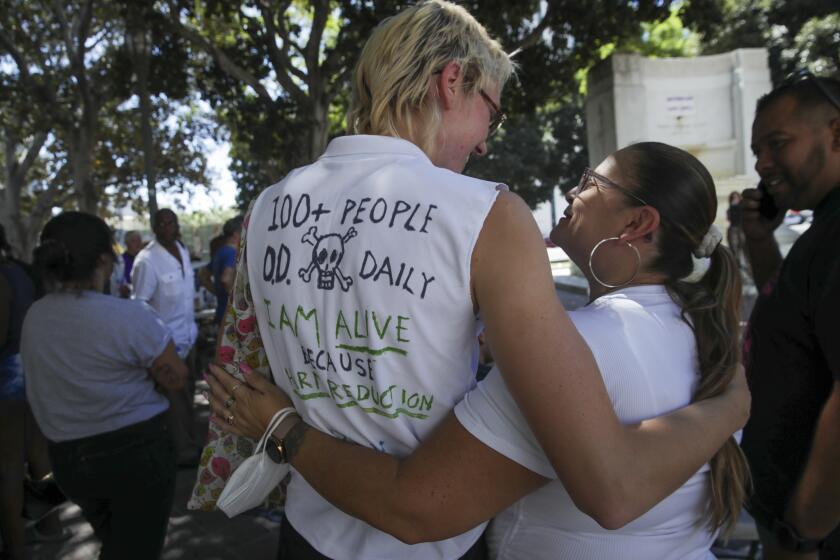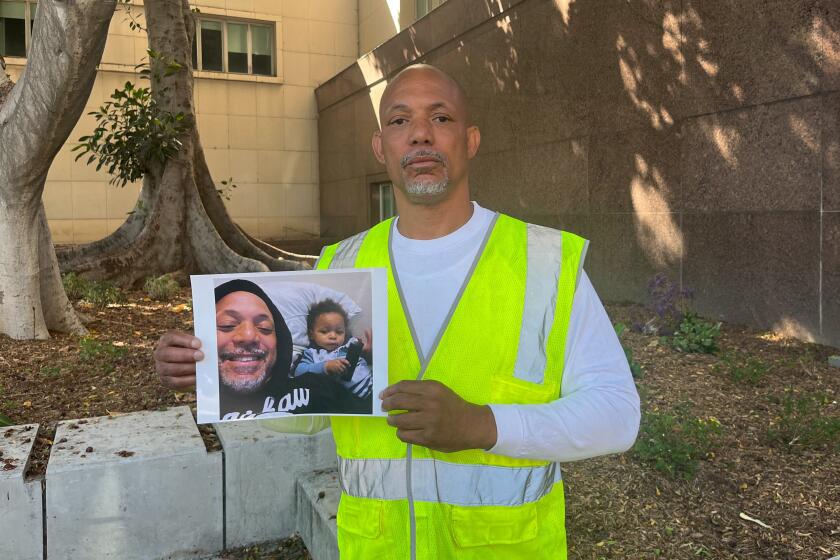In the fentanyl crisis, infants and toddlers become unsuspecting victims

Bakersfield — Ezekiel Xavier Rivera idolized his father.
The 2-year-old loved to follow Raul Rivera around the house and ride in the car with him, said Soluna Lora, Ezekiel’s mother.
On June 3, 2023, Lora left the little boy with his father in Bakersfield while she took his older brother for a haircut. She and Rivera, who have three children together, are separated. When she returned to drop Ermias off too, Lora said, she spotted a bulge in Rivera’s sock. It was a roll of cash and what she said she later learned was a baggie of drugs.
She demanded that Rivera let her take the children home with her, but he refused. She never saw Ezekiel alive again.
Two days later, the toddler was dead from acute fentanyl toxicity; Ermias — who was 3 — had tested positive for the drug. Rivera now faces a first-degree murder charge in connection with one son’s death and a felony count of child cruelty, accused of exposing his other son.

“They didn’t only lose their brother, they lost their father as well,” Lora said of Ermias, now 5, and his sister, EvaRose, 7. “They loved being with him. … Ezekiel loved [Rivera] so, so much.”
As the fentanyl crisis ravages communities across the country, toddlers and infants increasingly are becoming unsuspecting victims of an opioid that is 50 times more potent than heroin. Adults make up the vast number of fentanyl-related deaths, but public health experts say they are alarmed that more children below the age of 5 are dying or arriving in emergency rooms testing positive for the drug.
The number of drug overdoses nationwide has fallen for the first time in years, but the incidences of children overdosing has surged, doctors say, as they are exposed to opioids and drug paraphernalia at home or by accidental ingestion.
Although West Virginia has the highest fentanyl-related death rate, California has the most deaths overall, with 6,473 in 2022. Officials nationwide are struggling to come up with solutions to prevent young children from dying.
Opioid overdoses are depriving hundreds of thousands of children of parents, with especially dire consequences for Black families in Southern California.
“If you have these children that are left in chaotic homes, in homes that have … drugs around, that just increases the risk exponentially, particularly for these little vulnerable kids that explore their world by putting everything in their mouths,” said Dr. Emily Rose, co-author of a study about recognizing and treating pediatric and adolescent opioid overdoses.
America’s Poison Centers, which represents 55 accredited poison control centers in the U.S., reports a dramatic increase in fentanyl exposure in young children nationwide. In 2016, the centers received 10 reports of fentanyl exposure in children under age 6. That number was 539 in 2023.
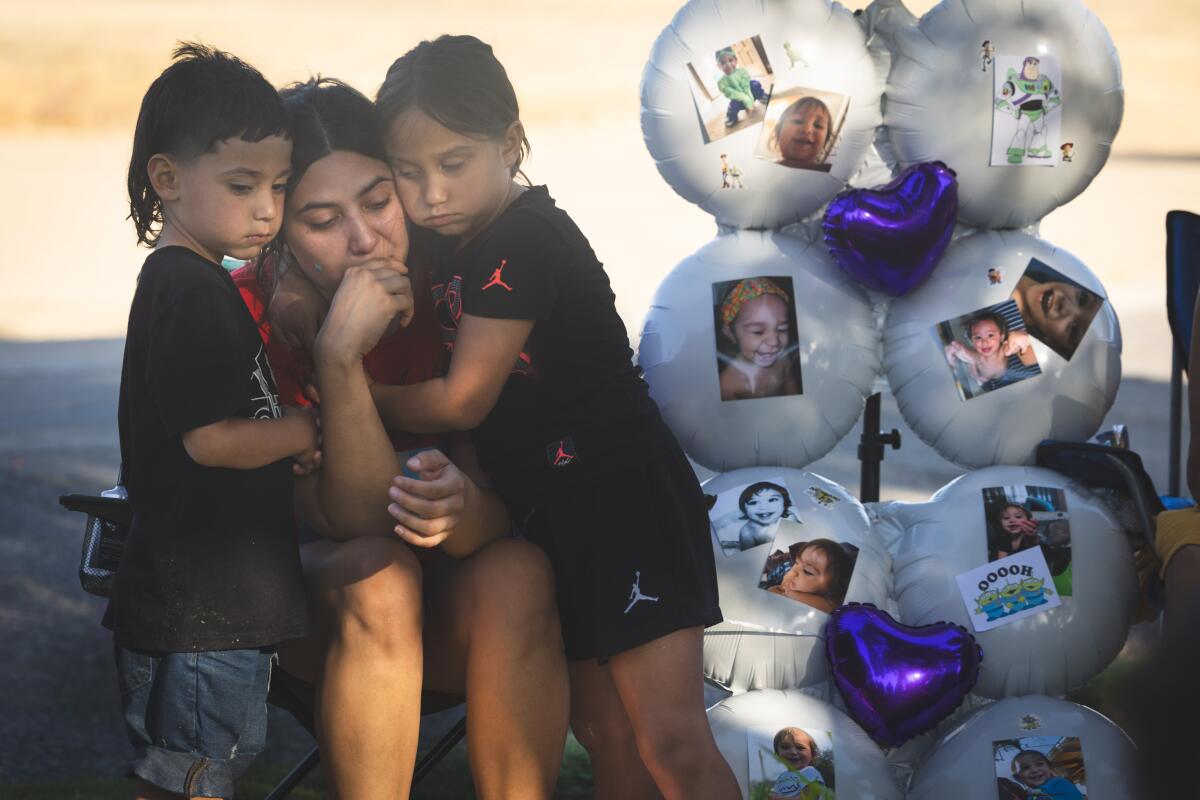
Fentanyl can be prescribed by doctors in pill or patch form, though illegally it typically is smoked, injected or found laced in other drugs as a white powder.
Preliminary data from the California Department of Public Health show 11 fentanyl-related deaths occurred in the state in children younger than 5 years old during the first three quarters of 2023, the most recent statistics available. There were 10 deaths for all of 2022 and six fentanyl-related deaths in 2021.
In Kern County, where Ezekiel died, the rate of fentanyl-related deaths is higher than the 2022 state average: California had a rate of 0.77 deaths per 100,000 residents, while Kern County had 1.4 deaths, according to the county’s annual child death report.
Brynn Carrigan, the county’s public health director, said she expects the number of 5-year-olds getting sick or dying from fentanyl to be even higher in the coming report, which will be released in October.
“I have an idea that there’s going to likely be some of our much younger children that are impacted by fentanyl in this next report,” Carrigan said. “They’re completely innocent victims. I mean, you can’t educate a 2-year-old not to touch fentanyl that maybe their parent has left lying around. It becomes a very difficult issue to solve.”
**
Lora said she knew Ezekiel was going to be special from the moment he was born. As she drove herself to the hospital, he just couldn’t wait. She gave birth alone in the car.
Ezekiel loved to play in the mud and spend time outdoors with his siblings. He wasn’t old enough to play a sport, but she always pictured him in a baseball uniform. She called him her “little caveman.” He had long brown hair and ran around naked because he didn’t like wearing clothes. He loved the “Toy Story” movies and the character Buzz Lightyear.

Lora said she was with Rivera for seven years, and their relationship experienced tense moments. They finally separated and split time with their children by verbal agreement. Lora lived with her sister, and Rivera lived at his parents’ home on a quiet street on the east side of Bakersfield.
It was a hot Saturday afternoon when Lora met Rivera in his driveway. She spotted a bulge in his sock and demanded to know what it was. He told her it was money, she said, but she saw a baggie of drugs fall out.
U.S. deaths due to drug overdoses fell last year, the first decrease in five years, according to estimates by the Centers for Disease Control and Prevention.
Lora became incensed and demanded that her sons go home with her. Rivera refused and went inside. Rivera’s mother called the Kern County Sheriff’s Department because of their loud arguing. Lora told the two deputies who responded that Rivera had drugs in his possession and that her boys were in the house. The deputies, Lora said, declined to search the home or get the children out for her.
“I felt like they just didn’t want to hear me,” she said.
Humberto Guizar, Lora’s attorney, said authorities “had an obligation right there — whether they knew there was drugs or not — to let her take her child away. But by not letting her take her child away, they caused the death of Ezekiel.”
The Kern County Sheriff’s Department and county attorney declined to comment, citing pending litigation.

Ezekiel and Ermias remained at their father’s until June 5, 2023, when authorities responded to a call of a toddler who had overdosed, according to a probable cause declaration in Rivera’s criminal case. It was first reported by the Bakersfield Californian.
The call came in about 11 p.m. By the time law enforcement arrived, Rivera was gone, Kern County detectives said.
A surveillance system inside the home captured the last moments of Ezekiel’s life.
At 1:41 a.m., according to the probable cause declaration, the little boy was seen entering Rivera’s room. At 3:50 p.m., Rivera came out of the room carrying Ezekiel’s body, which appears lifeless, before returning him to the room.
Ezekiel’s grandfather found the boy’s body about seven hours later, according to the declaration.
Inside Rivera’s room, Kern County detectives found two pipes used for smoking narcotics. They photographed residue on a “low standing piece of furniture.”
Rivera was arrested Aug. 3 on an unrelated warrant. He admitted to detectives that he had used fentanyl in the room where Ezekiel died, snorting it off the furniture detectives had photographed. Rivera told detectives that he found Ezekiel unresponsive at least one or two hours before he carried the 2-year-old out of the room. He said he was scared and didn’t believe calling for medical aid would have helped his son.
Rivera, 24, acknowledged that he was “aware of the dangers of fentanyl and the potential for overdose,” according to the declaration.
Lora said she got a call from one of Rivera’s neighbors and learned Ezekiel had overdosed. She raced over to the house.
Then she saw Ezekiel come out in a body bag.
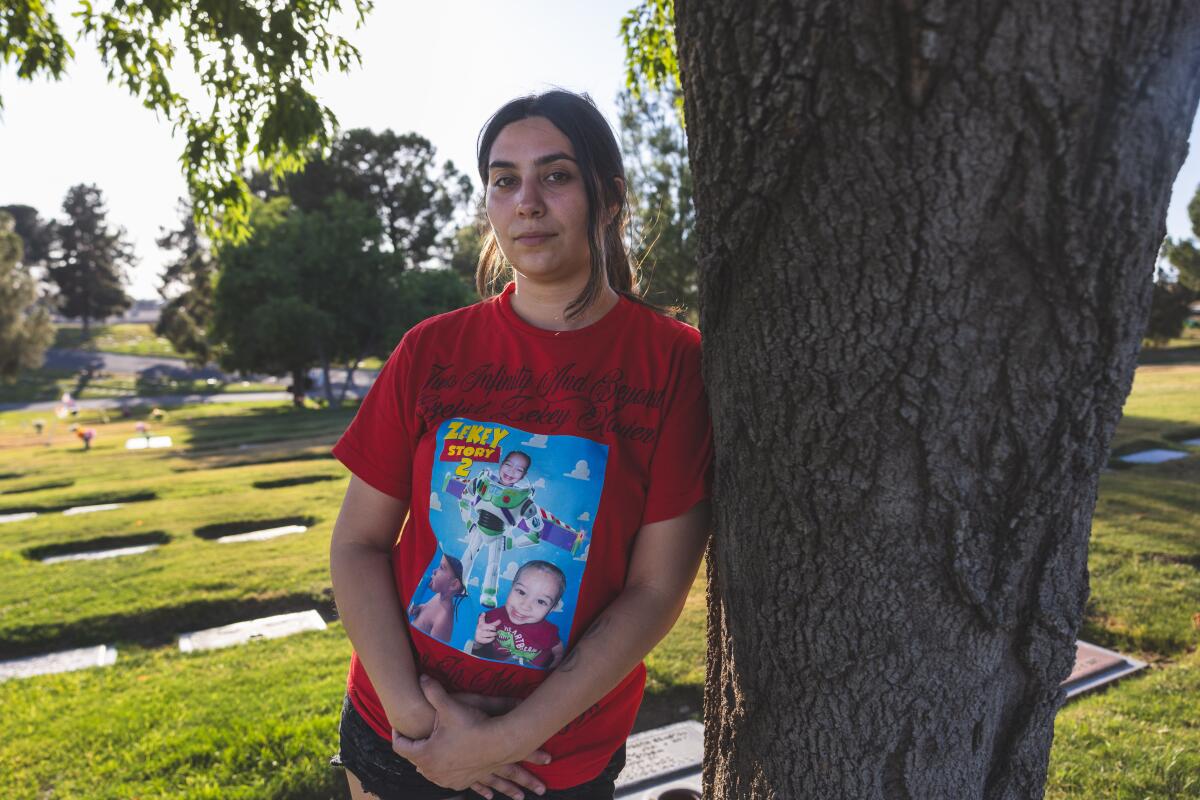
She cradled Ermias — whose eyes, she said, were red and puffy. She eventually took him to the hospital, where he tested positive for fentanyl.
Lora is suing Kern County and its Sheriff’s Department, saying they failed to protect Ezekiel when she begged to get her boys out of Rivera’s home.
“If they would have just sat there and listened to a crying mother … I would still have my son,” Lora said.
In January, the Kern County district attorney’s office charged Rivera with one felony count of first-degree murder and one felony count of willful child cruelty. He has pleaded not guilty and is being held on $1 million bail.
His family declined to comment. Rivera’s lawyer did not return a request for comment.
::
A study published in March in the Journal of the American College of Emergency Physicians Open acknowledged the recent increases in pediatric and adolescent opioid fatalities due to “accidental ingestions, prescription misuse, and household exposure.”
“Historically, opioid overdose has been associated with adults, but trends show an increasing incidence among pediatric patients,” the study says. “Opioids are the most common cause of fatal poisonings in young children and represent a significant public health challenge.”
Rose is a co-author of the study and an associate professor of clinical emergency medicine at the USC Keck School of Medicine.
The drug decreases the ability to breathe, Rose said. An adult can become hypoxic in a matter of minutes, but for a child, it can happen in less than one. Naloxone, which can reverse an opioid overdose, must be administered quickly.
In the last five years, she said, she’s seen more young children coming into the hospital with fentanyl overdoses. The youngest patient she treated who tested positive for fentanyl was 2 months old.
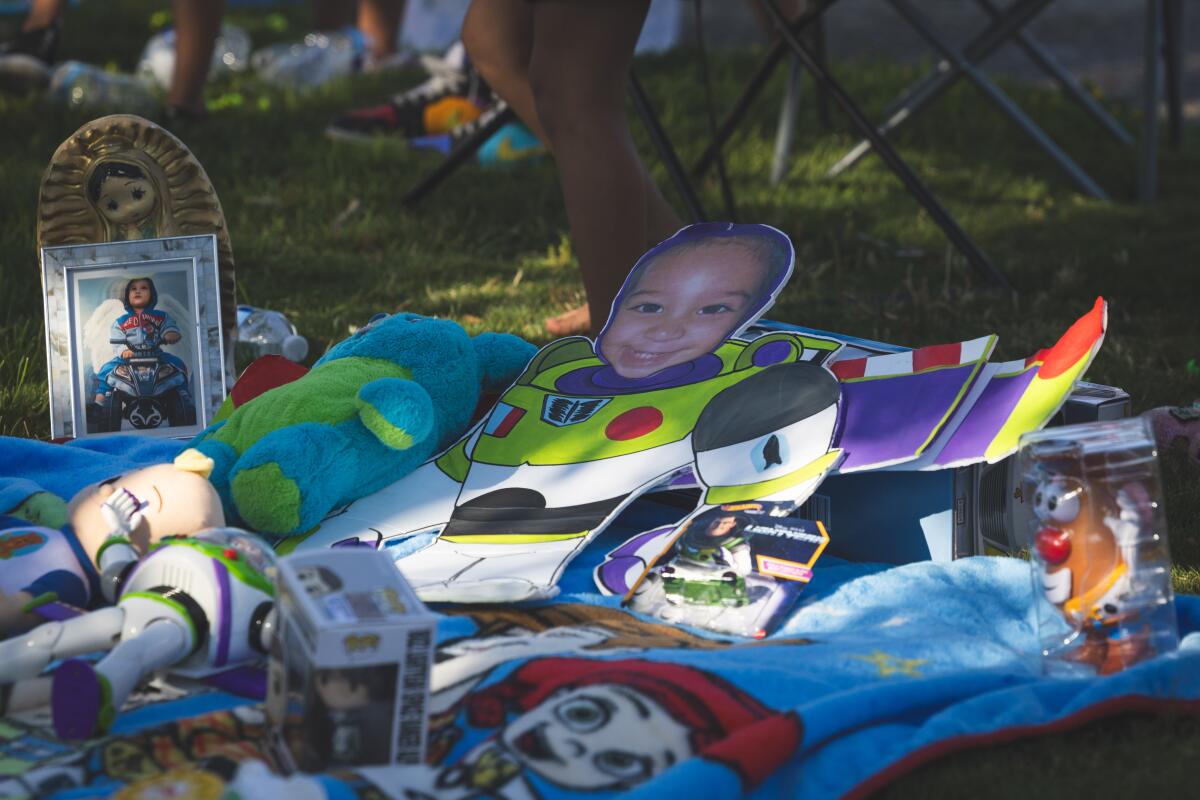
“It’s our duty as a society to protect the most vulnerable group of us,” she said. “It’s absolutely shocking and horrifying.”
A bill authored by state Sen. Dave Cortese (D-San Jose) asks the California Department of Public Health to monitor trends of fentanyl-related deaths among those ages 5 and younger and develop guidance to distribute information to local health departments on how to protect children from fentanyl exposure.
SB 908, Cortese said, would allow for a multiagency approach — such as those charged with family services and child welfare — on how to navigate situations such as family reunification when a parent has a history of substance abuse. The bill has passed in the state Senate and currently awaits a fiscal review.
Cortese said in an interview that the fentanyl overdose death of 3-month-old Phoenix Castro pushed him to introduce the bill.
Phoenix and her family lived in San Jose. She died May 13, 2023, from methamphetamine and fentanyl while in her father’s care, according to the Santa Clara County district attorney’s office. In court, prosecutors said the crime lab found fentanyl on the infant’s onesie, including on the snaps, according to the Bay Area News Group.
The home she lived in was “littered with opioids,” the district attorney’s office said. A baby bottle was found next to glass pipes.
Montise Bulley claims the Los Angeles County Department of Children and Family Services failed to protect his 1-year-old son, who died of fentanyl this year. Bulley plans to sue the agency and wants to see reform.
Her father, David Anthony Castro, is facing a felony count of child endangerment with a special allegation of causing the infant’s death and a misdemeanor count of possession of a controlled substance, said Deputy Dist. Atty. Maria Gershenovich. Castro has pleaded not guilty.
In November, the Santa Clara County district attorney’s office charged two parents with murder after their 18-month-old daughter Winter died from ingesting fentanyl and methamphetamine. The county coroner’s office found the toddler’s “fentanyl blood concentration” to be more than 14 times the fatal amount.
More recently, 1-year-old Justin Bulley died in February from the “effects of fentanyl” while in custody of the Los Angeles County child welfare system, during an approved visit with his mother, according to Justin’s father.
According to the medical examiner’s investigation, there were “several versions” as to what happened, but Justin’s mother said she’d been drinking alcohol, and Justin’s grandfather had been smoking fentanyl. The grandfather told officials that the child had an “interaction with fentanyl at some point.”
This month, twin 3-year-old boys died after being exposed to drugs laced with fentanyl in their Canoga Park home, according to Los Angeles County authorities. Prosecutors have charged their mother with murder and child abuse.
Cortese said “there’s a clock ticking in my head,” insisting that officials act fast.
“Whatever the state can do to further guide counties on how to avoid the incidences of babies and toddlers showing up in mortuaries over substance abuse exposure,” he said, “the state has to do.”
**
On June 5, a year after his death, Ezekiel’s family gathered at the Hillcrest Memorial Park cemetery in Bakersfield for the unveiling of his gravestone. He was buried beside his 37-year-old uncle, who died before he was born.
Paper pinwheels were unmoving in the hot, still afternoon. Photos of Ezekiel decorated a tower of white balloons. Family members and friends wore shirts memorializing the little boy. After her son’s death, Lora had a portrait of him tattooed on her thigh.
She crouched beside EvaRose and Ermias as the two pulled away a blanket, revealing a black gravestone with Ezekiel’s name and photo. Gasps and sobs rang out from the small crowd.
The image on the headstone is one of Lora’s favorites. She remembers, she said, giving Ezekiel a simple instruction before snapping his picture: Blow me a kiss.
And there he is, etched in stone, pursing his lips to make his mother smile.
More to Read
Sign up for Essential California
The most important California stories and recommendations in your inbox every morning.
You may occasionally receive promotional content from the Los Angeles Times.

